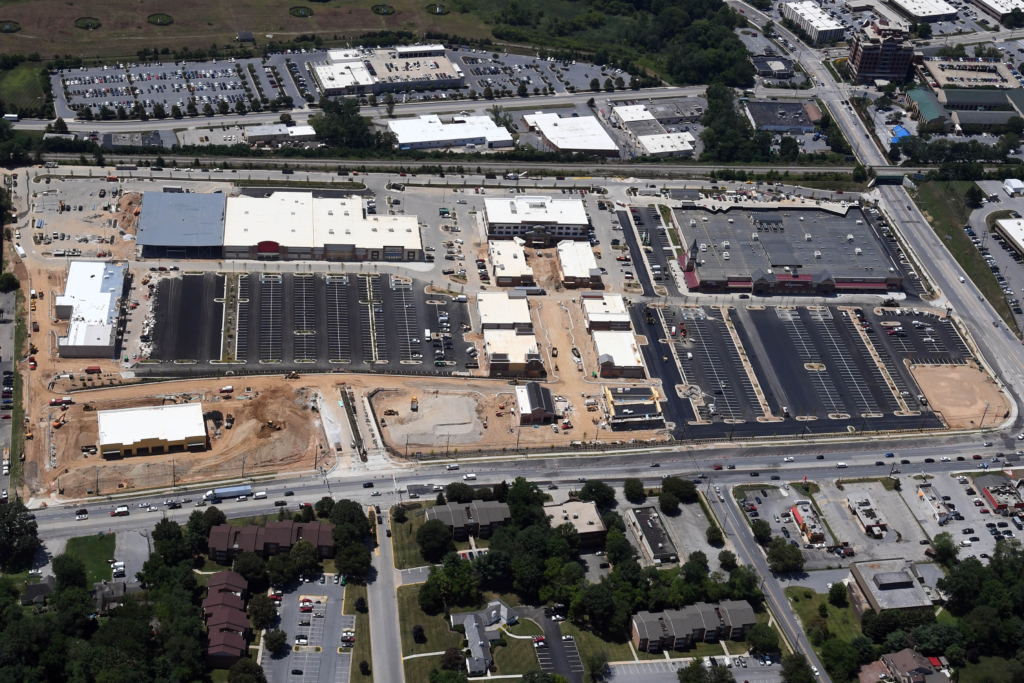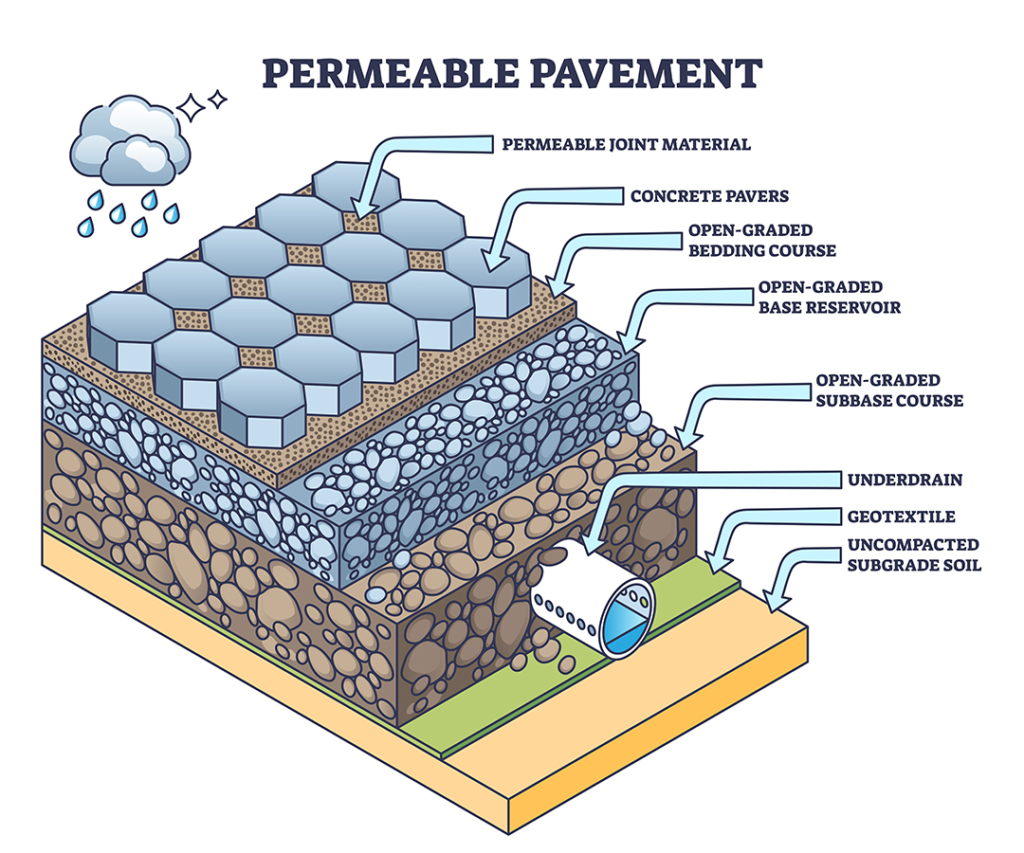When Greenberg Gibbons opted to install 13 acres of porous pavement at Foundry Row, the developer knew it would realize benefits from the investment. The porous surface would qualify as stormwater management capacity, drop the need for bio-retention ponds and enable Greenberg Gibbons to boost the amount of commercial, retail and parking space developed on the Owings Mills site.
In the eight years since then, the company has realized added benefits from its porous pavement, including reduced maintenance costs, high durability and a few customer conveniences.
That range of benefits is gradually convincing more commercial real estate companies that porous pavement is a good choice for certain sites where owners need to maximize building- and parking-footprints.
“In general, our pavement has performed phenomenally,” said Matt Mittenthal, Senior Vice President, Asset Management.

In 2016, Greenberg Gibbons installed the largest porous pavement parking lot in the state at Foundry Row. Photo courtesy of Greenberg Gibbons.
To prevent the pavement’s pores from becoming clogged with sediment, Greenberg Gibbons brings in specialized trucks twice a year to vacuum the parking spaces – an expense of about $12,000 annually. It has also performed added cleaning on a few low-lying areas that experience more sediment buildup. But that has been the extent of the parking lot’s maintenance.
Although porous pavement can be more susceptible to developing wheel ruts, that hasn’t happened at Foundry Row.
“Since the porous pavement is open and ‘breathes,’ it won’t develop freeze/thaw cracking and alligatoring as we see with regular asphalt,” Mittenthal said. “If you see any cracks form in the winter, in the summer the surface just seems to heal itself. That’s a huge plus that we had not anticipated.”
Consequently, Greenberg Gibbons has realized some operational savings.
“On a site like this, we would probably have $20,000 to $30,000 in the budget annually for paving repairs,” he said. “For Foundry Row, we have decided we can spend that money elsewhere or save it.”
The porous surfaces of parking spaces provide conveniences to customers, he added. “During heavy rains, the water flows straight through those voids so a customer parking their car can step out onto a nearly dry surface rather than stepping into a puddle.”
During the winter, those pores also prevent ice buildup on the surface, creating safer walking surfaces.
Although it costs more to install and has a shorter estimated lifespan than traditional asphalt, porous pavement is becoming “key to building some projects,” said Scott Forsythe, Project Engineer with Frederick Ward Associates. “When you are working in Baltimore City and parts of Baltimore County and doing infill-type projects, permeable pavers are advantageous because you don’t have to use as much space for stormwater facilities.”

In Cecil and Harford counties, some industrial properties have used porous pavement to fit building expansions on existing sites or meet local regulations for new construction, Forsythe said. For example, a planned expansion of a local manufacturing facility was expected to boost the building’s workforce by more than 30 people. Adding sufficient, traditional parking would have exceeded the site’s stormwater management requirements. A project design that included porous pavement for the additional parking, however, met county requirements.
“Harford County is one of the few jurisdictions that has maximum parking limits which can be a challenge for a company with a high-density workforce,” Forsythe said. “You may have 130 employees but the maximum allowable parking spaces is 115. You can meet that additional parking need as long as you are not creating more impervious surface. So, parking on permeable pavers can be your solution.”
Materials costs for porous/permeable parking surfaces are not substantially different than traditional asphalt, he said. However, many systems are proprietary and require the builder to source materials from a particular manufacturer and contract the manufacturer’s installers and inspectors to complete and certify the work. That can add cost and sometimes complicate construction schedules.
Also, some site conditions can prelude the use of porous pavement, Mittenthal said. A site with a high-water table or bedrock that comes close to the surface will not have enough subsurface space for the water to drain down from the porous pavement.